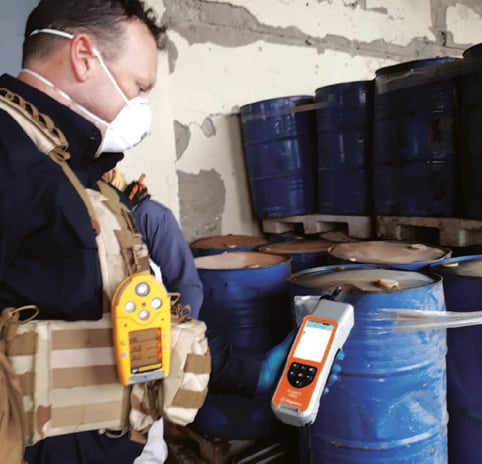A Post-Conflict Region in Chemical Crisis

 March 8, 2022 - What happens to a region in war conflict that is also home to abandoned mines, farms, industrial chemical facilities, oil fields, or radioactive waste depositories? With these locations becoming disturbed, environmental safety may be compromised for years to come.
March 8, 2022 - What happens to a region in war conflict that is also home to abandoned mines, farms, industrial chemical facilities, oil fields, or radioactive waste depositories? With these locations becoming disturbed, environmental safety may be compromised for years to come.
What TICS/TIMS Could be Found in Post-War Regions
Toxic Industrial Chemicals and Materials (TICS/TIMS) are a byproduct of commercial manufacturing and under the best conditions, become managed waste. As a remnant of war, facilities and containers become collateral damage spilling TICS/TIMS into the environment, compromising water and food sources.
Additionally, toxic chemicals leaked from military equipment, unexploded ordnance, and detonated munitions, or "war chemicals" will also add to the environmental contamination impact left behind.
Presumptive Identification of TICS/TIMS in Post-Conflict Regions
Raman spectroscopy provides a chemical fingerprint of the most common TICS/TIMS found in post-conflict regions. Rigaku’'s handheld ResQ CQL 1064 nm Raman analyzer was designed for the hazmat battlefield - capable of providing presumptive identification within a minute. Results from the Rigaku portfolio provides the user with tactical information at the point of need, and fits in a backpack.
On-site Presumptive ID in Post-ISIS-Occupied Territories
Read more about Jeff's post-conflict mission conducting toxic chemical surveys in order to remove and secure weaponized systems left in post-ISIS occupied territories.

